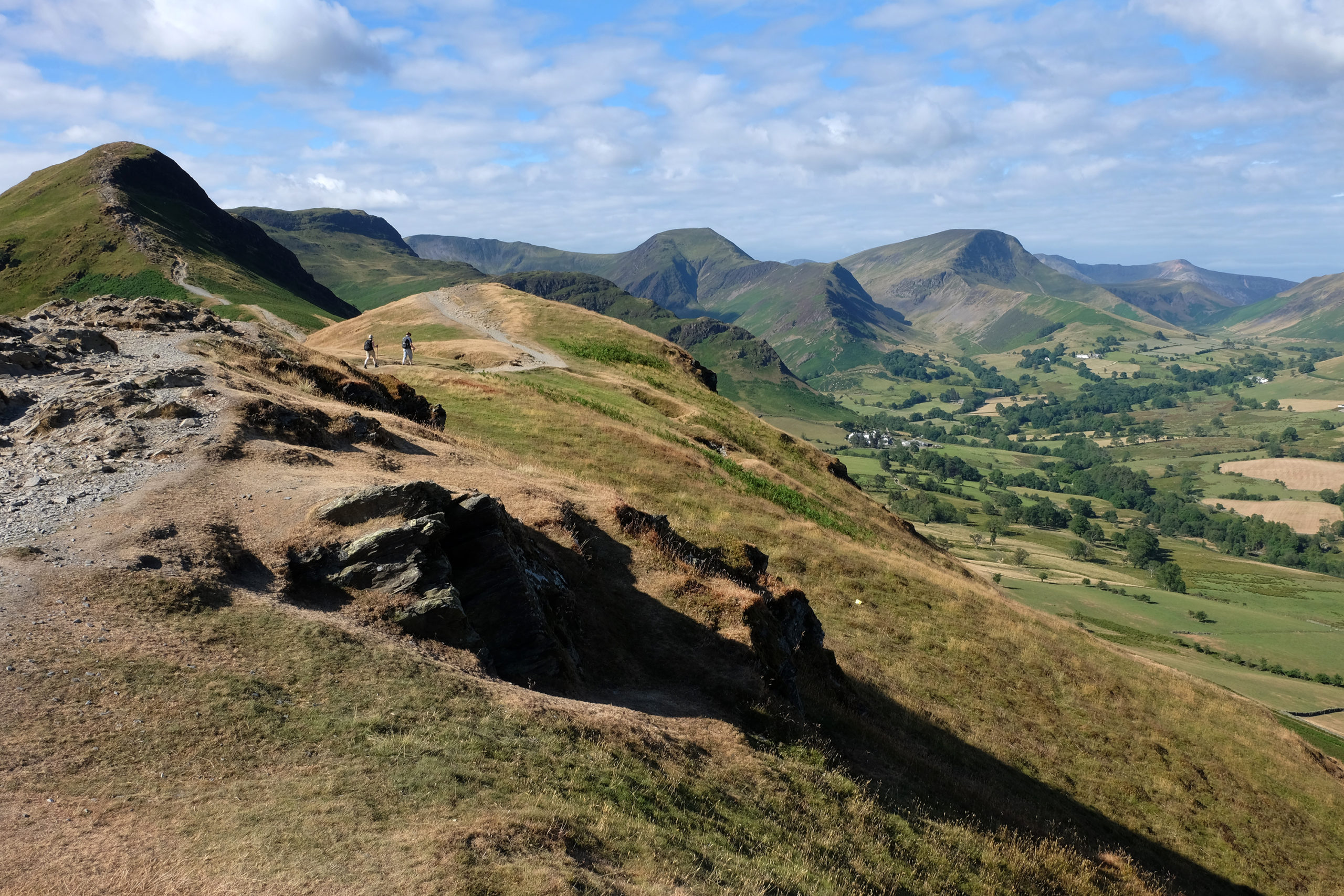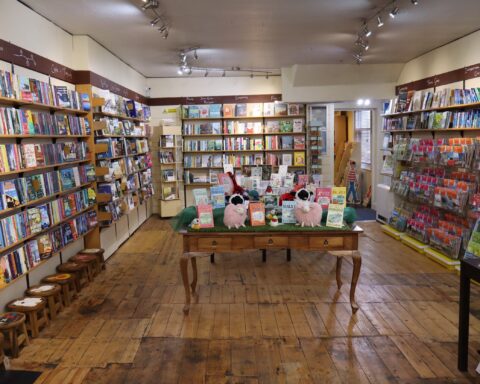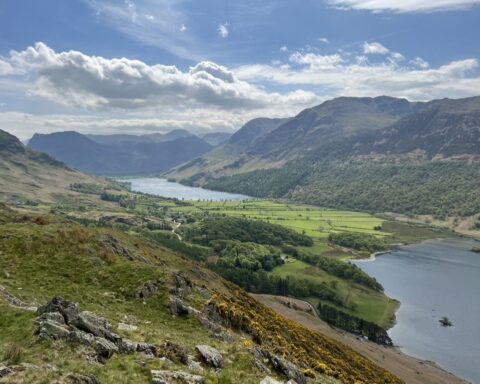The diminutive Cat Bells is one of the most popular fells in the entire Lake District. View it from the west on a sunny Sunday and you’ll see a line of walkers strung out all along its northern ridge. Its summit may be only 1479ft, or 451m, above sea level, yet it provides some truly sublime views of the northern part of the National Park – an outlook that takes in Derwentwater, an array of peaks including Skiddaw and Blencathra, and the sumptuous oak woods of Borrowdale. A toposcope, or view indicator, helps walkers to identify exactly what it is they’re looking at.
But the view is only half the story behind why it’s held in such high regard… The climb to the top is particularly beloved of families because the bare rock on the approach provides young fell-walkers with some added frisson that’s usually absent from other fells of a similar stature.
The usual way to ascend the fell is straight up its steep northern ridge. There is a tiny car park at the base of this, close to the hamlet of Skelgill, but roadside parking is not allowed. Because of these parking limitations, many walkers travel across from Keswick on the launch, alighting at the Hawes End jetty. Aside from it making practical sense, the boat trip is a sublime way to start and end the walk.
The best descent, unless intending to continue along the ridge, is via Hause Gate, the saddle between Cat Bells and Maiden Moor. At the bottom of this path, walkers are then spoiled for choice… There’s the superb terrace path along the base of the fell, or a glorious lakeside walk partly through woodland. Or maybe you just want to catch the boat back to Keswick from one of the Brandelhow piers…
Cat Bells is the first summit on a ‘horseshoe’ route known as the Newlands Round. This 10-mile roller-coaster walk also takes in Maiden Moor, High Spy, Dale Head and Hindscarth, the summits that form a semi-circle, or horseshoe shape, around the head of Newlands Beck. Along the way, walkers are faced with a total climb of more than 3500ft, making for a fairly tough outing but one guaranteed to leave them with some wonderful memories.
A cluster of white-washed buildings squats at the western base of Cat Bells. This is Little Town, the home of Lucie in Beatrix Potter’s The Tale of Mrs Tiggy-Winkle. The writer spent many family holidays on the shores of Derwentwater, and local scenes figure highly in many of her illustrated children’s stories. Indeed, Mrs Tiggy-Winkle, that most house-proud of hedgehogs, lived on Cat Bells; a “door in the hill” leads into her home.
Another famous Cat Bells dweller, this time of the human variety, lived on the opposite side of the fell. The twentieth-century novelist Hugh Walpole lived in Cumbria from 1924 until his death in 1941. He lived at Brackenburn, which he called his “little paradise on Cat Bells”, a house that received many literary visitors including JB Priestley, Arthur Ransome and WH Auden.





